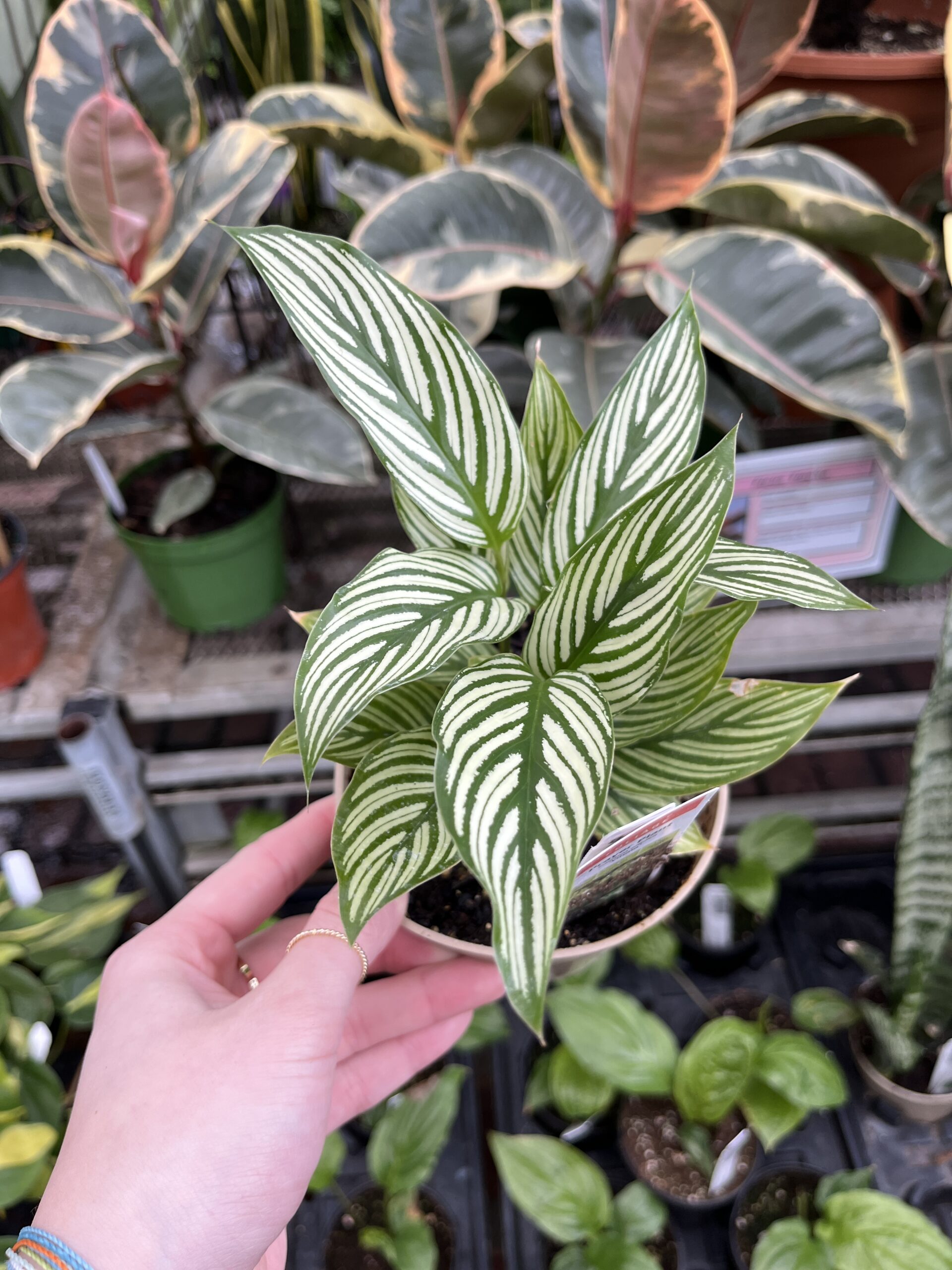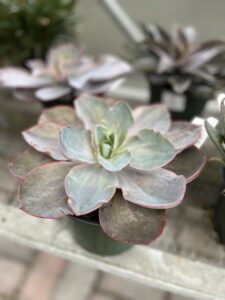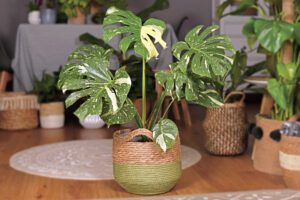Summary:
With indoor houseplants becoming ever more popular there’s a lot of information out there for which plants are best for beginners and how to care for them. While it’s true that there are absolutely some plants that are easier to care for than others, I’ve always maintained that your first plant should be the one you fall in love with first! None of plants in your local garden store are too difficult for the average person to care for, so here’s my advice for choosing and caring for your first plants.
Welcome to the dark side folks! The hobby of plant rearing is one of the most satisfying and fulfilling hobbies there is (in my opinion) that’s relatively low maintenance and beautifies your home. It does however, come with it’s own set of challenges. With the popularity of the hobby in recent years, there’s a ton of information out there and half of it seems to contradict the other half. Now I’m no master gardener, just an enthusiast who jumped on the bandwagon and has seen fantastic success with my own home plants, to the point of which I’m now the person my friends call whenever they want help with their own plants, and somehow also who my mother calls even though she has a few houseplants that are older than I am!
I’m going to hopefully give you the advice I wish someone had given me when I started my love affair with all things green and leafy, and tell you what how I decide which plant at the store is going to become the object of my Instagram stories for the next few days. Hopefully you find something helpful in here and feel free to reach out with any questions!
How To Choose Your Plants
This may be the most controversial part of my advice here but I’m going to say it repeatedly and loudly: there is no such thing as a beginner plant! Sure there are high maintenance and low maintenance plants with stricter requirements for surviving and thriving, but no plant is going to force you to look after it 24/7 in order to survive. It has been my personal belief that your first plant should be the plant that you fall in love with and makes you excited to start your own collection! My first trip to a plant store was fraught with my friend telling me to put down the pretty calatheas with the exotic colorful leaves and to pick out a simple trailing pothos that I wouldn’t kill in a month(not that there’s anything wrong with pothos, I personally have 2 in my bedroom alone). I’m proud to say that I willfully ignored that friend and still have my first plant that I ever bought, a very happy lemon lime maranta that has been with me for 3 years and has grown wildly since I first purchased him.
Keep in mind, I am a plant murderer. I have failed over and over again to the detriment of some very pretty (and expensive) plants that have joined and left my collection, but those failures have only pushed me to want to try again and figure out where and what those plants need to survive and thrive in my home, and most of the time I figure it out. I swear that plants speak to us with their body language and I’m slowly becoming fluent.
I’m getting ahead of myself here, what you need to keep in mind when getting your first plant is this: do I have the time and energy to do what it takes to properly care for this plant? As I mentioned, any plant can be your first, but looking up what each plant needs is a great starting point for knowing whether that plant will be a great fit for you. There are plants that almost prefer if you forget about watering them for months on end, and plants that will have you changing a humidifier every three days and who will literally faint to remind you when you haven’t given them enough attention in the last few days. It all depends on your style of plant parenthood, and luckily there are beautiful matches for the laziest to the most overbearing styles. Here are some common houseplants that you can find almost anywhere broken down by neediness levels:
For The Lazy Plant Parent:
- ZZ (Zanzibar Gem) Plants – These guys have very distinct waxy leaves that come in a variety of different shades from bright limes to almost black. They prefer medium to bright light but will tolerate very low light levels and you only need to water them every 2-3 weeks, or whenever the soil is completely dry.
- Aloe Vera – You can completely forget about owning this plant and it’ll probably be happier for it. With their thick green spiky leaves, aloe plants should go about a month between waterings letting their soil dry out completely in between. They do need at least medium light to stay happy though, so they tend to thrive on windowsills.
- Snake Plants – These plants come in fantastic leaf colors and patterns and most garden centers will have small guys who can sit on a counter top or massive specimens that’ll make you mad you skipped leg day last week when it comes time to repot them. They prefer low light and also only need to be watered about once a month, making sure the soil is completely dry in between waterings.
For The “I Can Do This Once A Week” Plant Parent:
- Most Succulent Varieties – Any succulent from the pretty colorful flowerlike echeverias to my personal favorite strings of pearls all seem to be big fan’s of P!nk’s song Leave me alone I’m Lonely. They retain water in their leaves to a point where you absolutely cannot water them more than once every month or 6 weeks, making sure their soil is completely dry in between and their leaves are starting to go soft, but when they do need water, they need WATER. Most succulents do best if you quite literally dunk the whole plant underwater until the bubbles stop and absolutely soak their well-draining soil medium so they have plenty of water to rehydrate those thick leaves. They also have high light requirements and need to be rotated frequently (about once a week) to avoid burning, but overall they’re relatively easy to care for as long as you, excuse the pun, take the plunge.
- Begonias – These have become a surprising personal favorite of mine since I picked up my first spotted begonia on a whim and watch him literally double in size within a month. The come in insane varieties of colors and patterns and are very satisfying to own, because once you figure out what your begonia likes, it’ll reward you with a ton of new growth. There are a ton of different varieties (over 1000!), however the ones typically chosen for indoor growing are known for their fantastic leaves. The biggest things with begonias is that they never like to be fully dry. They will let you know quickly if they aren’t getting enough water because those gorgeous tall stems will bend over and the leaves will faint, a dramatic state which is stressful and taxing to your plant, but one that it can recover from. Just give him the water that he is begging you for. To avoid the fainting however, just make sure you’re checking your begonia’s soil once a week to make sure it never gets fully dry, however too wet and they’ll develop the big plant killer: root rot. Generally, just let the top inch dry out but no more and you should be golden!
- Peperomias – These plants are quite interesting with thicker generally teardrop shaped leabes and have some unique properties. They also come in fantastic varieties of colors and patterns and have the unique ability to be propagated or regrown from any part of the plant except for the roots. They enjoy medium to bright light but some species will tolerate low light. They need to be watered about once every 1-2 weeks, letting the soil dry out completely between watering, and while not necessary for them to thrive, they do benefit from a higher humidity level. The best part? With the thickness and shape of the leaves, these plants are naturally pest resistant as well as pet safe!
For The “I Like To Baby My Plants” Plant Parent
- Fittonias (Nerve Plants) – These striking plants have a flair for dramatics. They require bright indirect light since direct light will burn their leaves, and need to be consistently moist, with waterings about once a week or else they’ll reward you with a dramatic faint where they’ll shrivel up their leaves and look dead. Fear not! As long as their leaves aren’t crunchy, this boy is just being dramatic and telling you he needs…. Something. Usually its humidity, sometimes it’s water, and sometimes I swear it’s just because they can, but whatever it is there is nothing more satisfying than guessing correctly and watching those beautiful leaves unfurl for you again. As mentioned above, these plants also require a relatively high humidity level, and benefit from a humidifier somewhere nearby, but they’ll tolerate a spritzer or a plate of water beneath them as well.
- Calatheas (Prayer Plants) – This is where my heart belongs. Calatheas come in huge variety of sizes, shapes, colors, and patterns, all of which are unique and beautiful. They get their nickname “prayer plants” from their tendency to move throughout the day, to adjust to the light, or as I like to think of it, to wave hello to you! They are similar to fittonias in that their delicate foliage requires bright indirect light to not burn their leaves, they need to be kept warm at all times, and their soil needs to remain consistently moist, so watering once a week. They are also a plant that has high humidity requirements, so if you’re going to commit to a calathea (or 10 like me) you’re should consider investing in a good sized humidifier. They will also faint if one if their needs aren’t being met, and they can recover, but doing so takes a lot of energy from the plant so it’s best not to let it happen too much or your plant may not recover.
- Alocasias (Elephant Ears) – These beautiful and uniquely shaped plants are very sensitive to both over and underwatering. Their large stalks each hold an individual large leaf, and if that stalk isn’t full of water it droops, which can recover providing the stalk doesn’t break. They also require the same bright indirect light and high humidity levels as the above two mentioned plants, but they don’t recover from too many oversights, so make sure to keep their soil moist to avoid the many alocasia funerals that’s I’ve been through. Also keep a lookout for any sort of white crust on the top layer of soil, this is an indication of salt build up from watering your plant, which means it’s time to repot!
Let The Right One In
So you’ve figured out your plant parenting style and are ready to take the plunge and buy your first plant. Yay you! Your next step is actually buying the plant! But where do you buy from? Lowe’s always has a huge variety for a great price, garden centers can be intimidating, and even target sells plants these days! Well if I may make a suggestion: shop local. Avoid Lowes and Target because half the time the plants there have only been there for a day or two and aren’t being cared for properly, and odds are the staff isn’t going to be able to answer your questions. I never mind going on adventures to plant stores even if they’re a good ride away, because you never know what exciting plant varieties you’ll find! Plus at these stores, you know the plants you’re purchasing are being cared for with their needs being met and are most likely never going to come home with pests. The best part? The staff! Most of my plant knowledge just comes from asking the staff at my local gardening center who are always happy to talk to me about what my plants need and commiserate with my after my 5th calathea white fusion has managed to get spider mites again (if you know and tricks for this btw PLEASE send help).
Once you’ve picked out your store, all that’s left is to choose your plant! Once you know which species you want, look through the specimens available and don’t be afraid to pick them up and really look closely. I always look for a plant that has new foliage coming in, which is a sign of a happy and healthy plant. I also look for any signs of pests, anything resembling white dust, small scales on the undersides of leaves, or spider webs and that plant along with any plants in the same section (if not the whole store) are going nowhere near my plants at home since pests spread like wildfire and are easier to avoid than to fight with. I also, and bear with me here, sniff the soil. If I smell any sort of icky sweetness or rotting, I’m also putting that plant down because it may have developed root rot and is most likely on it’s last limbs already, no matter how pretty the foliage might look at the moment.
In Summary
That’s pretty much it! That’s everything that goes through my head when deciding whether to purchase a plant or not, from deciding whether I’m ready to do the work necessary to keep the plant happy and healthy to deciding which specific plant to take home. Obviously, there are a ton of other varieties of plants out there that I haven’t mentioned for the sake of finishing this article this year, but if you have any questions about plants I may not have mentioned or suggestions for future articles please let me know! I’ll link a few necessities for the needier plants that I always have in my home at the end of the article. Obviously, I only named a very small amount of the options available for each level of neediness, but if you have any questions about specific varieties or plants I didn’t mention please feel free to ask away using our email or in the comments below! Happy Planting!




